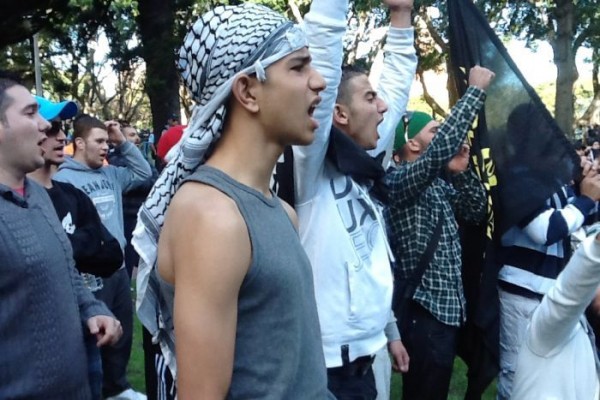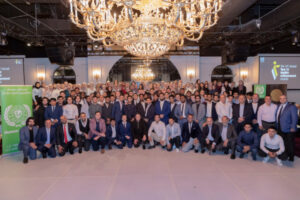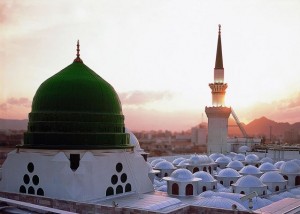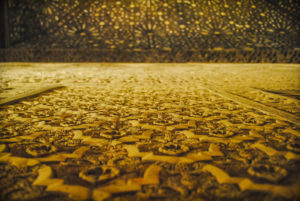
The justification of the use of any means to reach a certain end has become common among many contemporary Islamic movements, particularly the use of violence against others – despite the fact that doing so contravenes both the text and the spirit of Islam.
The violent demonstrations witnessed in Sydney and other parts of the world over the film Innocence of Muslims has drawn my attention to a number of important issues.
Let me begin with the film itself: a low budget film that is bigoted, derogatory, shamefully insulting and, more importantly, loaded with factual errors. The film has rightfully been condemned in the strongest terms by Muslims and non-Muslims alike. The tragedy is that its maker, along with those who support it, has cunningly succeeded in misusing a noble idea – freedom of speech – to defame a noble Prophet and incite hatred and violence among a vulnerable Muslim community. Given that freedom of speech is not absolute, it would seem reasonable to expect some restraint on any material that is defamatory and incites hatred.
And that brings me to the violent reaction to the film by some Muslims: this minority group may justify their violent actions based on some religious pretext. It is not the first time that Prophet Muhammad has been abused or insulted. During his lifetime he was called a madman, a magician and a liar, and his wife Aisha was slandered and accused of adultery. He was pelted with stones and strangled while praying, and his daughter Zaynab was fatally stabbed with a spear. But not once did he respond to these events violently. In fact, his wife said that the Prophet never avenged anything that was done against him personally. So, none of these protesters can cite an example of violent reaction as proof from the life of their role model – the Prophet Muhammad.
Of course, the right to object to and indeed peacefully protest against the film is afforded to them within our democracy. And as long as the protesters conduct themselves with civility and behave in accord with the rule of law, we should defend their right to do so. But we must reject the violent behaviour, and equally the abhorrent placards proudly displayed on the day, because they an insult to all rational people, Muslim or not.
Such a display of violence and arrogance is indicative of a radical, and indeed extremist, mindset that is fundamentally opposite to that of the Prophet whom they purport to defend. Much academic research has gone into understand the phenomenon of radicalisation. Among the established causes are religious risk factors including:
- radical ideology;
- empathy and altruism (strong connection to the concept of an international brotherhood);
- association with radicals;
- socio-economic factors;
- personal experiences;
- criminal activity; and
- racism and Islamophobia.
All of these factors play a role, in one way or another, in the process of radicalisation. The matter is thus complex, and it is culpably simplistic to attribute the causes of radicalisation, and indeed the violent protests themselves, to a single cause.
In addition to the above risk factors, there is another element that is usually overlooked. The violence witnessed in Sydney, and radicalisation generally, is linked to a failure to understand the Islamic text and contemporary social, political and economic context. The text is sophisticated and requires years of study. It is only through specialized study that the text can be understood and applied in a way that is consistent with its spirit and higher objectives.
Most young Australian Muslims have never studied the text with well-recognized religious scholars. Instead, they are self-taught (if at all), relying on whatever book or audio lectures they can get their hands on. The result is disastrous, not only to the wider Australian community but equally to their own Muslim communities.
But let me emphasis one other overlooked dimension. The neglect of ethics and spirituality in the lives of many Muslims, Islamic institutions and Islamic movements of recent times has given rise to extremist tendencies. A revival of ethics and spirituality will play a constructive role in the transformation of the lives of Muslims, leading to more constructive social interactions.
A fundamental aspect of Islamic ethics is that the end does not justify the means. One cannot use noble means to achieve an objectionable end, and vice versa. Further, Islamic ethics is governed by moderation and balance, the direct opposite of extremism and injustice (see Qur’an 2:143) – as the Prophet Muhammad said, “be aware of God wherever you are. Follow up a bad deed with a good deed and it will blot it out. And deal with people with excellent character.”
Spirituality, on the other hand, is concerned with the reformation of the individual. It is at the core of the Islamic tradition, which aims to counter one’s capriciousness, hatred, prejudice and arrogance, to name just a few vices. A departure from this essential Islamic tradition has caused the community to sink into the various “isms” that are at the centre of all Islamic criticism. Any consideration of the future of the Australian Muslim community must of necessity take this as the core and essence of its endeavours.
When speaking about Islamic spirituality we are speaking about the Islamic tradition in its most inward and universal aspect. A failure to correct the inward leads to superficial following, and the outcome, as we have so often seen, is catastrophic. This was summed up beautifully by Syyed Hossein Nasr, who declared: “the heart of Islam is also the Islam of the heart, which is that spiritual virtue or ihsan (excellence).” Once the heart is aligned with the Divine, the emanating ethics will be consistent with the Divine command regardless of circumstances.
Ethics and spirituality are the requisite qualities that can prevent one from compromising essential values and morals despite other communities doing so. Any approach to teaching Islam that does not concentrate on ethics and spirituality will inevitably lead to a fundamental corruption of belief and application – the result of which is parading right in front of our eyes.




